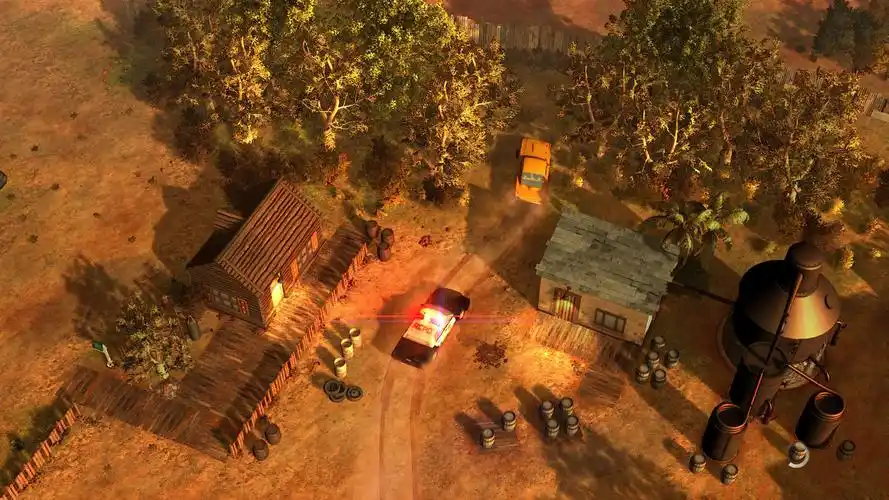Title: Enhancing Realism and Training: The Load Missions Expansion for Counterbalance Forklift Simulator VR
Virtual Reality (VR) has revolutionized training methodologies across various industries, and the logistics and warehousing sectors are no exception. The Counterbalance Forklift Simulator VR has established itself as a premier tool for immersive, risk-free operator training. Its latest update, the Load Missions Expansion, marks a significant leap forward, transforming a robust training simulator into a comprehensive platform that bridges the gap between basic operation and real-world logistical problem-solving. This expansion doesn’t just add new tasks; it fundamentally enriches the learning experience, preparing operators for the unpredictable nature of warehouse environments.
The Core of the Expansion: Scenario-Based Learning
The base simulator excels at teaching the fundamental principles of forklift operation: maneuvering in tight spaces, lifting, lowering, and basic load handling. The Load Missions Expansion builds upon this foundation by introducing a series of structured, goal-oriented scenarios that mirror actual job responsibilities. Instead of practicing skills in isolation, trainees are now placed in a dynamic virtual warehouse and given specific objectives to complete within a set timeframe.
These missions are meticulously designed to cover a wide spectrum of common and complex warehouse tasks. For instance, one mission might require the operator to unload a delivery truck, verifying the cargo against a digital manifest, and then transporting the pallets to their designated high-bay storage locations using the correct pallet racking protocols. Another mission could involve order picking: navigating narrow aisles to retrieve specific items from various heights to fulfill customer orders, emphasizing both speed and accuracy.
Key Features and Training Benefits
1. Advanced Load Handling Dynamics: The expansion introduces a greater variety of load types, each with unique physical properties. Trainees will encounter standard pallets, irregularly shaped crates, fragile goods (like glass or electronics), and soft loads (like bags of powder). Each type demands a different approach. Fragile loads require exceptionally smooth acceleration and braking to prevent "load damage," which is tracked by the simulator's physics engine. This teaches operators the critical skill of adapting their driving style to their cargo, a nuance often missing in traditional training.

2. Environmental Challenges and Hazard Recognition: Real warehouses are fraught with potential hazards. The Load Missions Expansion populates the virtual environment with dynamic obstacles such as moving pedestrians, other forklifts operating nearby, spilled debris on the floor, and low-hanging structures. Trainees must constantly scan their environment, practice proper horn use at blind corners, and maintain a safe speed. This heightened focus on situational awareness is crucial for accident prevention and fosters a strong safety culture from the very beginning.
3. Inventory Management Integration: A novel feature of this expansion is the integration of basic inventory management tasks. Operators are required to interact with a virtual terminal to confirm shipment details, scan barcodes on pallets using a simulated handheld device, and ensure loads are placed in the correct storage locations. This reinforces the idea that a forklift operator is an integral part of the larger supply chain, responsible for data accuracy as well as physical movement.
4. Performance Metrics and Adaptive Difficulty: Upon completing a mission, the simulator provides a detailed performance report. This goes beyond a simple pass/fail grade. It includes metrics on completion time, load damage percentage, fuel or power efficiency, number of safety incidents (e.g., near misses), and inventory accuracy. This data-driven feedback allows both trainees and instructors to identify specific areas for improvement. Furthermore, the adaptive difficulty system ensures a continuous challenge; as an operator's skill improves, the missions become more complex, introducing tighter time constraints or more complicated loading configurations.
The Impact on the Industry
The Load Missions Expansion for the Counterbalance Forklift Simulator VR addresses a critical industry need: reducing the costly gap between classroom certification and on-the-job proficiency. By exposing trainees to high-pressure, realistic scenarios in a safe virtual space, companies can significantly lower the risks of workplace accidents, product damage, and equipment misuse. The result is a new generation of forklift operators who are not just competent drivers but intelligent, safety-conscious, and efficient logistical professionals.
This expansion also offers immense value for recruitment and assessment. Companies can use these challenging missions to evaluate a candidate's aptitude, problem-solving skills, and composure under pressure before they ever step foot in a physical warehouse.
Conclusion
The Load Missions Expansion is more than just additional content; it is a paradigm shift in vocational training. It successfully captures the complexity and unpredictability of material handling, providing an unparalleled experiential learning tool. By combining advanced physics, realistic scenarios, and comprehensive performance analytics, it ensures that virtual training translates directly into real-world competence and confidence. For any organization invested in safety, efficiency, and building a highly skilled workforce, this expansion solidifies the Counterbalance Forklift Simulator VR as an indispensable asset in their training arsenal.
Tags: #VirtualReality #ForkliftTraining #VRSimulation #LogisticsTraining #WarehouseSafety #ImmersiveLearning #SupplyChainTech #OccupationalTraining #VRGaming #IndustrialSimulation


















